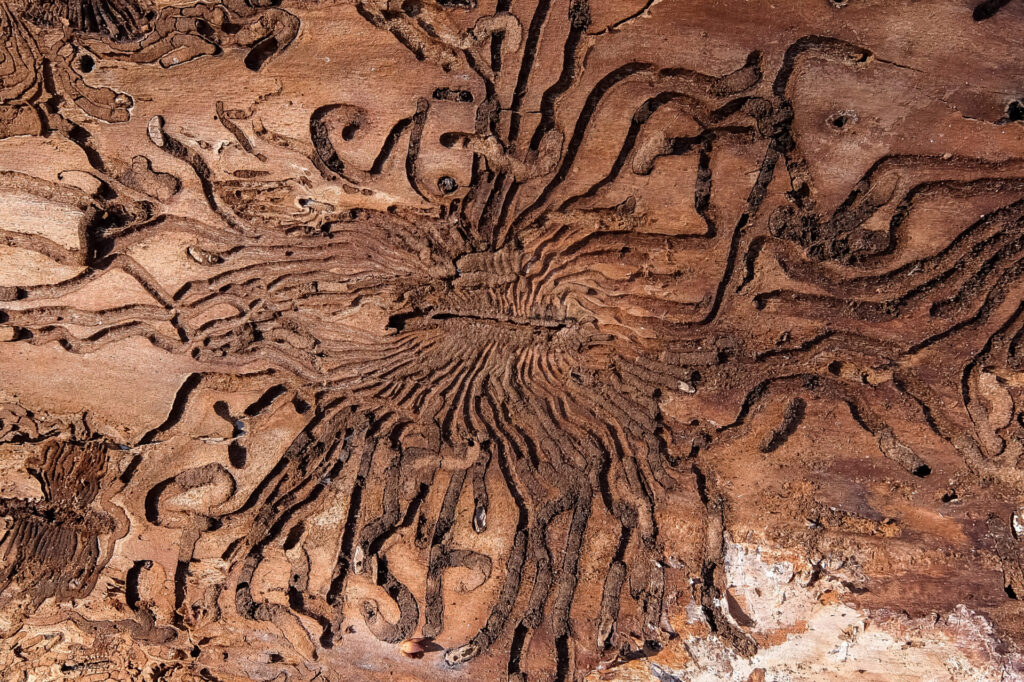Cockroaches. Spiders. Wasps. Gnats. Mosquitoes. Scorpions. For a couple of months every thirteen years, a plague of cicadas. Sometimes it seems like there aren’t many types of bugs, pests, and creepy-crawlies that don’t live in Georgia. But none of them cause the same kind of terror in the hearts of homeowners as that destructive little beast, the termite.
Our warm climate may be great for the tomatoes and folks who love a dip in the pool, but nobody loves it more than termites. It’s estimated that there are, on average, three 8-10 colonies per acre in Georgia, each colony hosting up to a million of the wood-hungry monsters. In a list of the states with the highest termite risk, Georgia ranks second, right behind our neighbors to the south in Florida.
Around the world, there are about 3,000 species of termites, of which 50 live in North America. Out of that 50, three are the ones that keep Georgia homeowners up at night: the eastern subterranean termite, the drywood termite, and the Formosan subterranean termite.
Eastern Subterranean Termite (Reticulitermes flavipes)
The eastern subterranean termite is the most common termite found in North America. It has a range covering most of the continental United States, particularly east of the continental divide, although colonies have been found as far west as Oregon. It’s also been introduced as an invasive species into southern Canada, Europe, South America, and the Caribbean. If someone you know has had to deal with a termite infestation, it was probably this type of termite.
As their name suggests, subterranean termites build their colonies underground. Their soft bodies don’t retain moisture very well, so these insects have to stay in contact with moist soil or mud and will build mud tunnels whenever they’re feeding aboveground.
They prefer to dine on soft or rotting wood, so the soft pine and fir that most homes and businesses in the South are framed with are a particular treat for this species. They’ll typically enter a home through the foundation or the flooring, either tunneling in and establishing a colony underneath the structure or building expansive networks of above- and below-ground access tunnels to reach their feeding ground.
If you see any of the following signs around your home or business, you may have a colony of eastern subterranean termites to deal with:
- Piles of wings, usually spotted in late spring or early summer
- Mud tubes on the exterior walls of your home or on the piers of your home’s foundation
- Small holes or long channels carved out of the surface of your home’s softwood framing members like floor joists, subflooring, and sills
West Indian Drywood Termite (Cryptotermes brevis)

While this species of termite was first recorded and described in Jamaica, it’s now thought that the pest didn’t actually originate in the West Indies. Unlike its subterranean cousins, this type of termite doesn’t require contact with soil in order to stay hydrated. Instead, it draws ample water from the wood fibers it eats to stay alive.
Also unlike the subterranean termite, the drywood termite prefers hardwoods and tunnels into a piece of wood to do its dining. It can live entirely inside the wood for a long period, leaving no external evidence of its presence beyond a tiny pinhole where it first began tunneling into the wood. Because of this behavior, it frequently hitches a ride inside hardwood furnishings, which has made it one of the most commonly introduced invasive species of insect in the world.
Drywood termites are a relative rarity in Georgia, living primarily in coastal areas. Homeowners not near the coast should still be vigilant, however; drywood termites have been found in homes all over Georgia.
If you have a drywood termite problem, you’ll notice that hardwood structures in your home (flooring, trim, etc.) or hardwood furnishings have tiny pinholes and sound hollow when you knock on them. You may also observe small, conical mounds of termite feces (known as “frass”) building up underneath hardwood items.
Formosan Subterranean Termite (Coptotermes formosanus)
Originally from China and introduced to the island of Taiwan (“Formosa” is the former name for Taiwan), the Formosan subterranean termite is sometimes nicknamed the “super-termite” because of its voracious appetite, massive colony sizes, and ability to completely destroy a wooden structure with incredible speed.
A mature Formosan termite colony can eat almost a pound of wood a day, and larger colonies can render a small wood-framed house uninhabitable in three months’ time.
The Formosan termite was introduced to the US in the mid 1950’s through the Port of New Orleans and rapidly spread across most of the southeastern United States. Homeowners in South Georgia are most likely to encounter this pest and should take action immediately at any sign of an infestation to prevent severe termite damage.
The signs of a Formosan termite infestation are largely the same as the signs for other subterranean species: mud tunnels, long channels cut into wood surfaces, and large piles of wings during the spring and summer swarming season.
Don’t Let Termites Eat You Out of House and Home – Let National Exterminating Head Termites Off at the Pass. Call us: 478-922-1410.
National Exterminating’s termite control solutions include the award-winning Sentricon® bait station system and Termidor liquid termite treatment. Call us today at 478-922-1410.
Related blogs:
